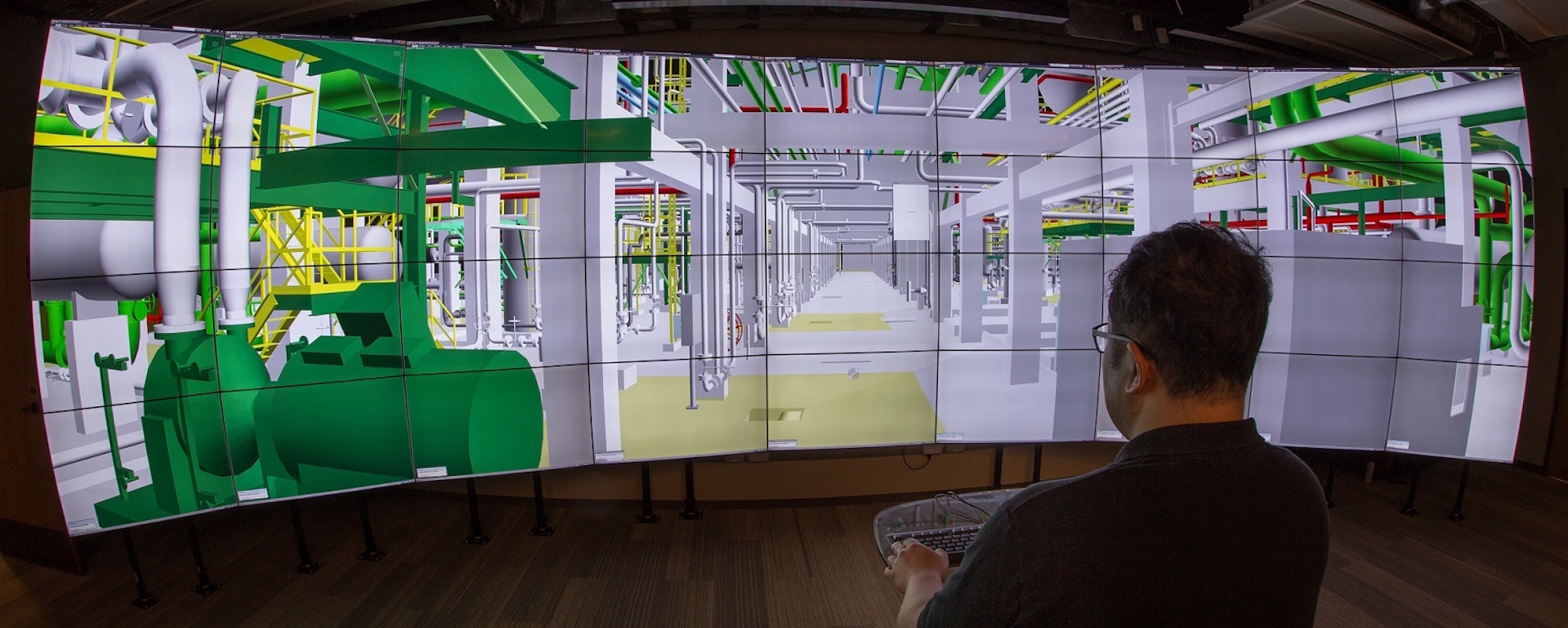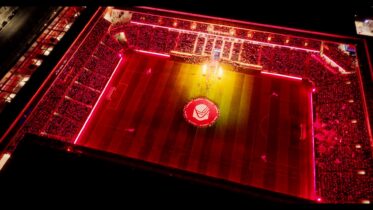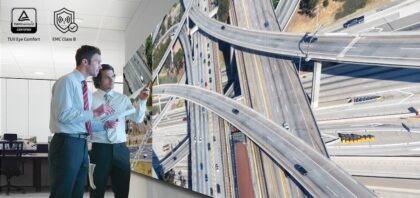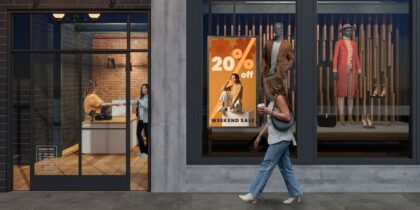As technology improves and network capabilities increase, digital signage is becoming an increasingly effective and affordable solution for higher education, so much so that nearly 70 percent of colleges have installed digital displays, according to Higher Ed Tech Decisions. Digital displays allow you to share information across a campus almost instantly, and they can help enhance learning inside and outside the classroom. Here are a few good ways you can use digital signage in higher education.
Safety Information
When there is a threat on campus, such as impending bad weather, digital signage for colleges and universities allows administration and public safety officials to work together to quickly make announcements that can reach students in any common area. The need to provide safety information was a huge driver in West Virginia University’s decision to deploy digital signage after a security incident on their campus in 2007. With digital signs, schools can rapidly deploy alerts and necessary steps to find refuge.
Additionally, your student health center can create videos and slides discussing the services they offer. They can also share information about required vaccinations, scheduling an appointment or business hours during breaks to serve students who aren’t leaving campus.
Social Media Sharing
As students, faculty and community members post about your school, you can display their Facebook and Twitter posts in real-time to build a sense of community on campus. This can be really fun during a big football game week or when a political figure is coming to campus to speak. The University of Southern California used their integrated social media and digital signage systems to increase engagement during the 2015 graduation ceremony. Anyone who has attended a large school’s graduation knows how challenging it can be to keep everyone interested in what’s going on.
Marketing Messages
Your school likely creates many high-quality marketing messages for use on local television stations, during televised events and on your website. Add those to your digital signage content rotation to build school pride and help ensure that students continue to pursue their education at your institution. Additionally, your student union, campus bookstore and on-campus vendors might want to provide information about special sales, book buyback dates and other offers for students and faculty.
One important marketing function is to grab the attention of potential students when they visit campus. Digital signage can highlight campus facilities and events that the school has hosted, demonstrating the unique sense of community your campus has to offer. Interactive displays can also be used for wayfinding, guiding prospective students and parents around your campus.
Teaching Partnerships
Schools around the world can use digital displays and teleconferencing tools to co-teach groups of students. This allows institutions to offer innovative, specialized courses of study without the economic burden of hiring additional faculty, which can help student retention by providing individualized degree programs. Customized study helps students learn the skills they need and make the right connections to help them succeed after they graduate.
The Wharton School of the University of Pennsylvania used digital screens to their advantage when they created a telepresence classroom, linking business leaders in the school’s two locations, which allowed for seamless teaching. The goal of the classroom was to make students feel like they were attending a live lecture even if the instructor was located across the country. The screens are combined with cameras so that students and faculty can interact easily. Wharton’s chief information officer, Dan Alig, said that the school hopes to invite business leaders outside their faculty to present in one of their connected classrooms.
Enhancements to Courses of Study
A new way to use high-quality digital displays is to enhance the capabilities of a program, either in classrooms or labs. Texas A&M University has integrated more than 50 Samsung digital displays into their College of Engineering’s 98-year-old building to provide a more up-to-date course of study in construction engineering. They have grouped 36 of these displays on a 180-degree curved video wall that allows students to produce four-dimensional simulations of building designs. They call it a “BIM CAVE,” or Computer-Aided Virtual Environment for Building Information Modeling.
Texas A&M Creates State-of-the-Science BIM CAVE with Samsung Displays from Samsung Business USA
Texas A&M’s BIM CAVE is unmatched by any other university in the United States, and has helped generated increased student interest and enrollment. This approach could dramatically enhance other courses of study too, including digital media, journalism, business, communications, video production and medicine. The school also installed displays in classrooms, common areas and conference rooms to ensure that students and faculty have state-of-the-art equipment accessible everywhere they need it.
Digital signage in higher education can put your school ahead of the rest. Read the case study on Texas A&M’s innovative use of display technology.








